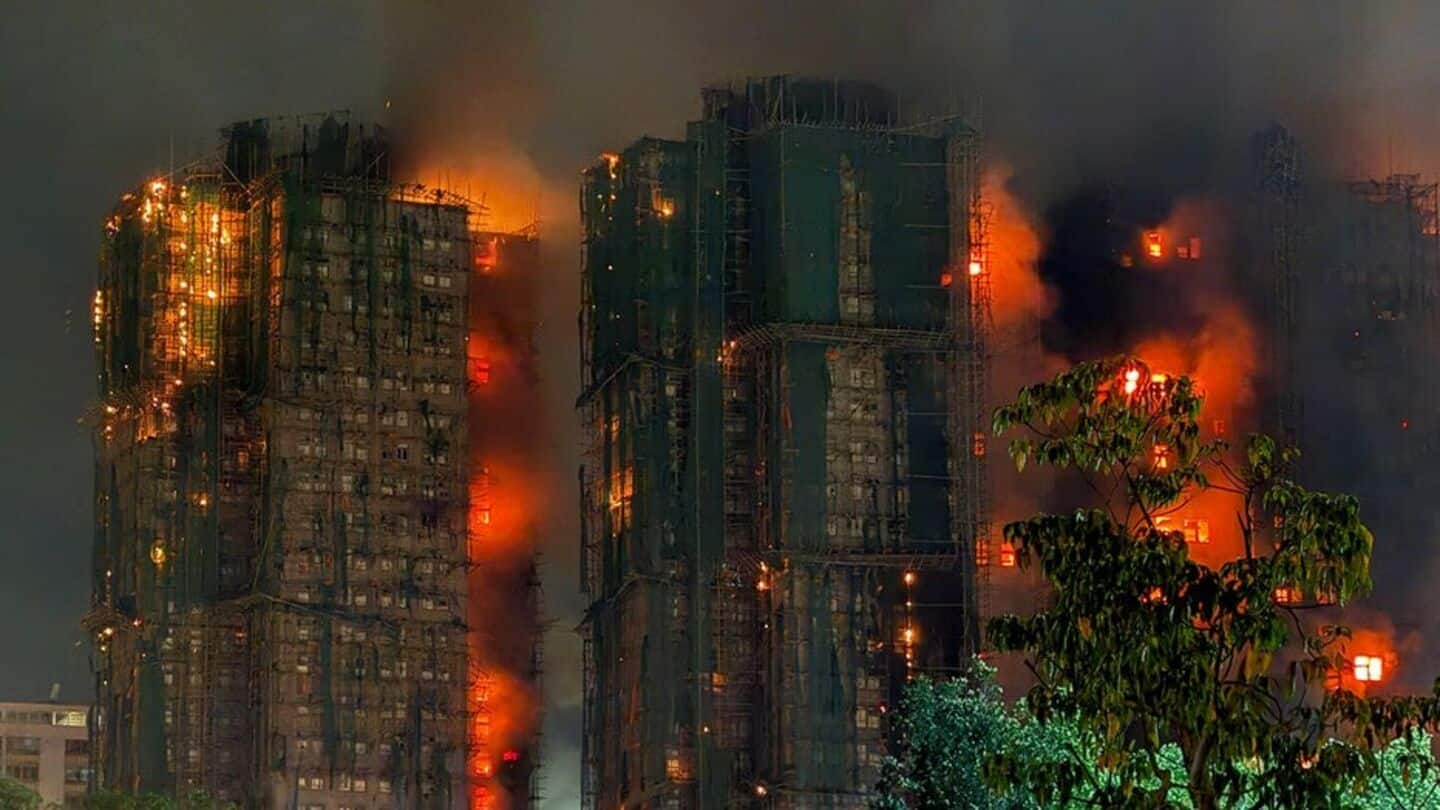
Hong Kong fires: Death toll rises to 44; 279 missing
What's the story
At least 44 people have been killed, while 279 people are missing after a major fire engulfed public housing apartments in Hong Kong's Tai Po district on Wednesday. The fire is still raging hours after it was first reported, with over 760 firefighters battling the flames. Three men have been arrested on suspicion of manslaughter in connection with the fire. The suspects include two directors of a construction firm and an engineering consultant.
Ongoing investigation
Investigation underway into Hong Kong fire
Police said the massive fire at the Hong Kong apartment building was likely caused by dangerous scaffolding and foam materials used during maintenance work. They stated that in addition to the buildings being covered with protective mesh sheets and plastic that might not meet fire requirements, they discovered that certain windows on one untouched building were sealed with a foam material. The Hong Kong Fire Department has classified the incident as a level five alarm, the highest severity.
Emergency measures
2 million yuan announced
Chinese President Xi Jinping has authorized 2 million yuan ($282,470) for Red Cross emergency support as the search for missing individuals continues in the ongoing Hong Kong apartment fire. The funds will help fund "emergency rescue and humanitarian assistance related to the fire and will provide further support based on the needs of disaster relief," the Red Cross Society of China said.
Fire
How fire spread
The blaze started in Wang Fuk Court, a large apartment complex in Hong Kong's Tai Po neighborhood. Wang Fuk Court is made up of eight tower blocks, each 31 stories high. According to the 2021 government census, they provide 1,984 apartments for approximately 4,600 occupants. The tower blocks, built in 1983, were undergoing renovations, with the outside of the buildings covered in bamboo scaffolding and construction netting.
Tower
Bamboo scaffolding could have worsened fire
Bamboo scaffolding has been utilized in Hong Kong for generations because it grows fast, is lightweight, and is extremely robust. Hong Kong is also one of the world's last remaining cities to use it in modern construction. According to local media reports from March, the government's development bureau has been trying to phase out the usage of bamboo due to safety concerns. The push to replace bamboo with metal came after a string of scaffolding-related deaths in Hong Kong.